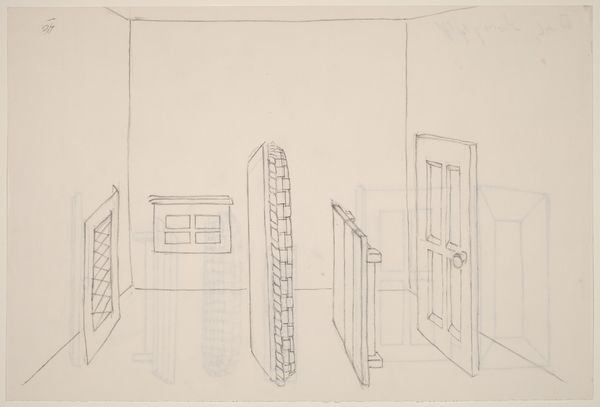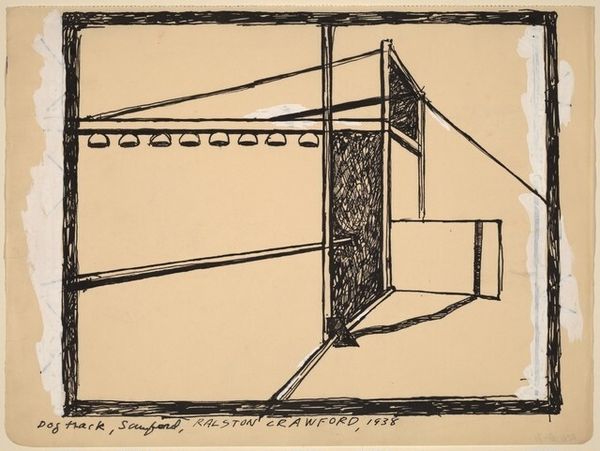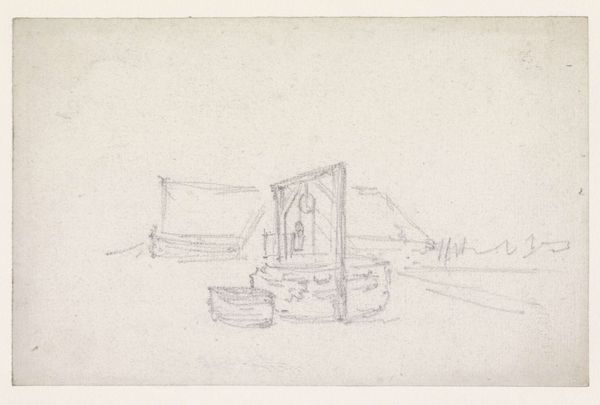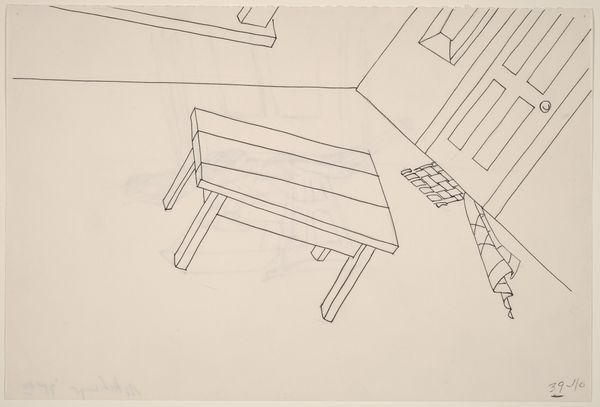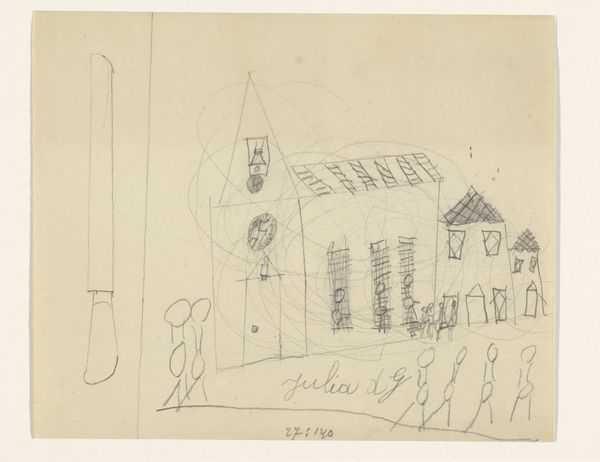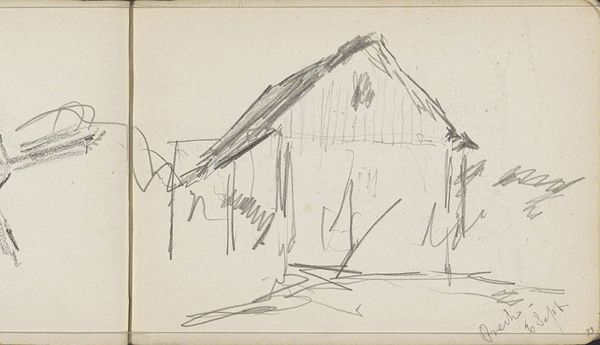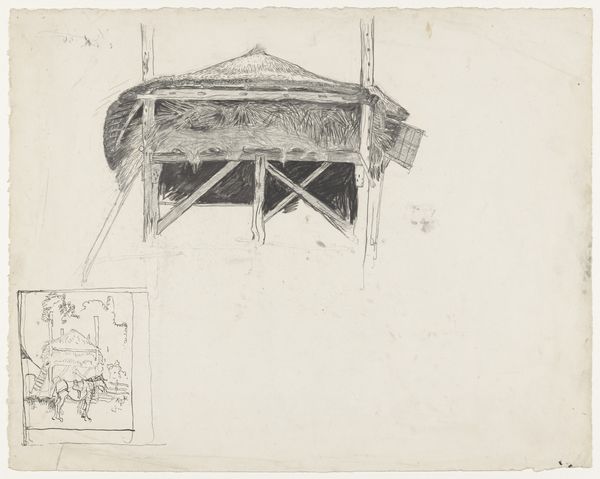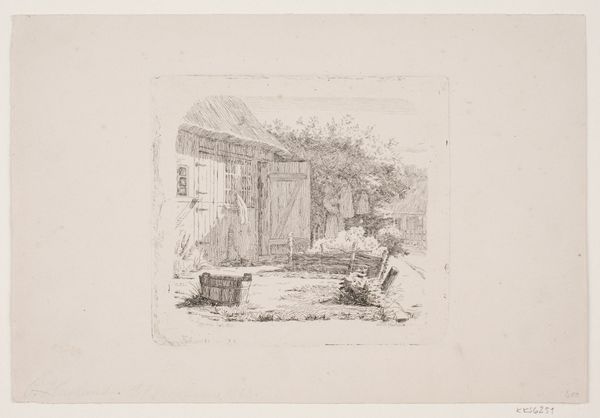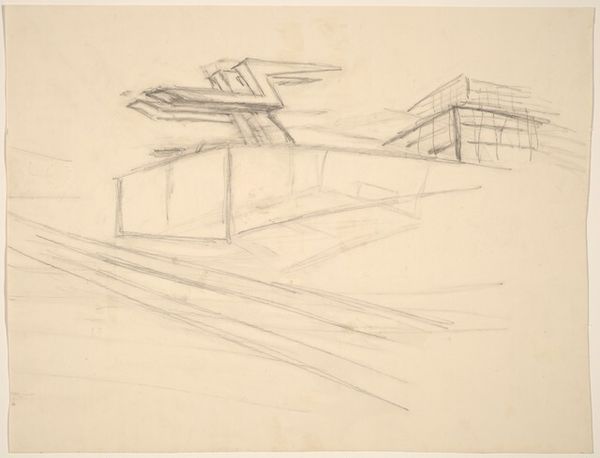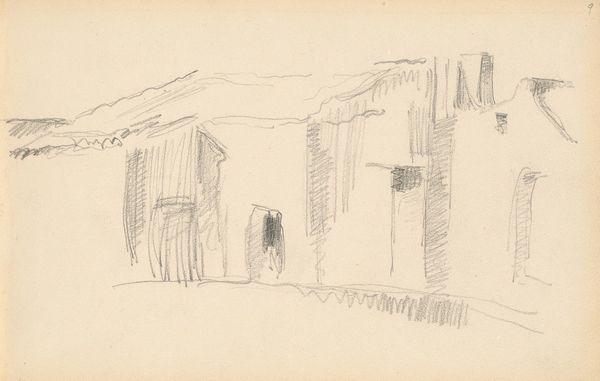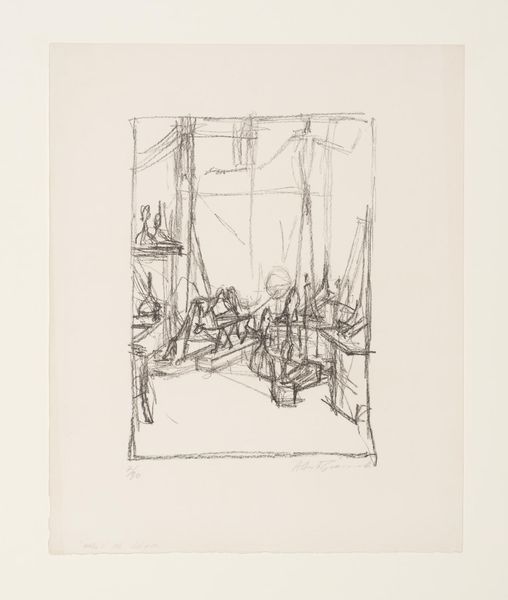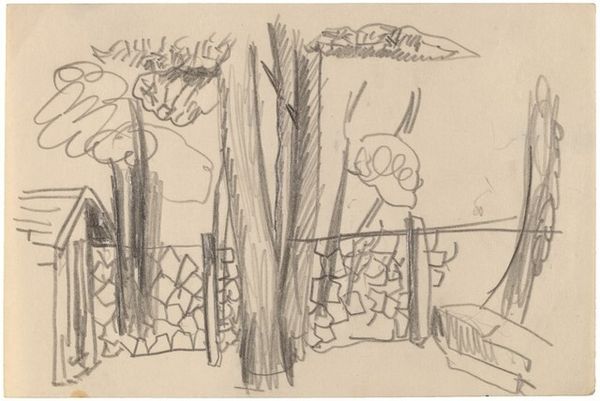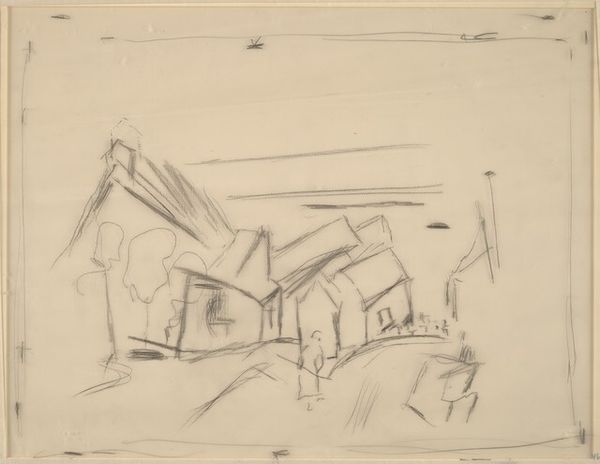
drawing, ink, pen
#
drawing
#
pen sketch
#
ink
#
geometric
#
pen
#
modernism
Dimensions: sheet: 19.9 × 29.5 cm (7 13/16 × 11 5/8 in.)
Copyright: National Gallery of Art: CC0 1.0
Curator: Richard Artschwager's "Basket, Table, Door, Window, Mirror, Rug #25," created in 1974 with pen and ink, presents a fascinating study in how we perceive domestic spaces. What strikes you immediately about this particular drawing? Editor: It has a strange, almost unsettling starkness to it. The simplicity is striking, but also leaves a feeling of something incomplete or… slightly off. The objects feel familiar yet alien somehow. Curator: Precisely. Artschwager's use of basic forms—the geometric representation of everyday objects—highlights how cultural memory intertwines with our understanding of space. These symbols, universally recognized, trigger a sense of home, but simultaneously, their abstracted form challenges the very notion. The basket, for instance, isn't just a container, but a symbol of labor, storage, and even cultural identity. Editor: I agree. The seemingly casual composition speaks to a larger question: the role of domestic space in constructing societal norms. The "table," "door," and "window" become stand-ins for more profound structures—gateways and frames of reference that shape individual and communal narratives. Artschwager offers the space, but what are its societal restraints and constructs? Curator: The fact that this image relies on the symbolic potential of ordinary things makes it incredibly relevant when examining the development of pop art and its relation to cultural perception. Each symbol acts as a portal into an era. Editor: Exactly. And this sparseness could even be a commentary on consumerism—we’re left contemplating essential forms devoid of excess. Even as these objects denote an intimate sphere of influence, Artschwager refrains from presenting them warmly. The line work almost seems to reinforce a social division rather than a sentimental one. Curator: It becomes evident that in “Basket, Table, Door, Window, Mirror, Rug #25,” Artschwager doesn’t just depict objects but rather, explores how their meanings fluctuate according to cultural perspective. The drawing, a mere sketch, leaves space for the audience’s imagination to play. Editor: Absolutely, and through this interplay of form and symbolism, Artschwager subtly encourages us to question our assumed knowledge about the most familiar parts of our world.
Comments
No comments
Be the first to comment and join the conversation on the ultimate creative platform.
